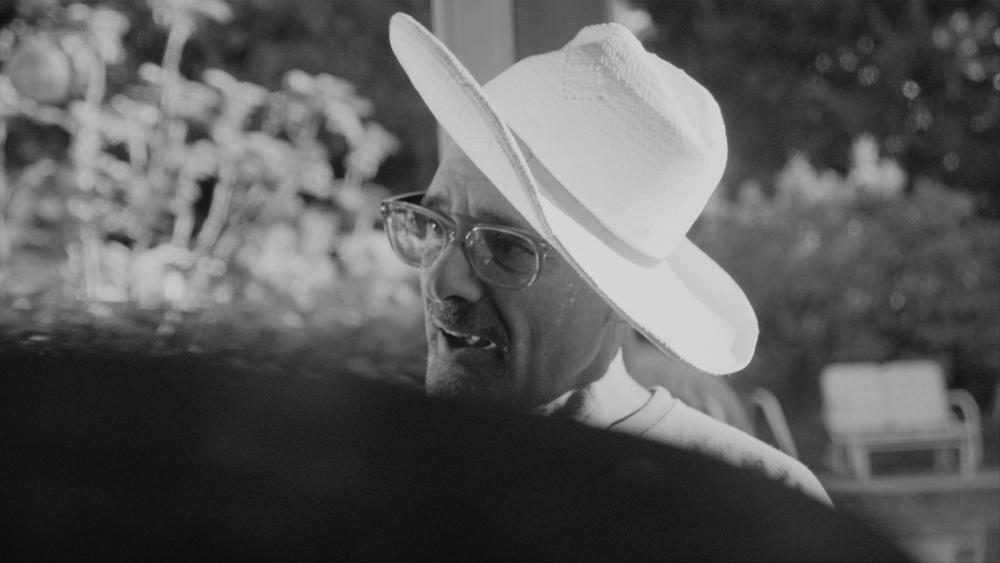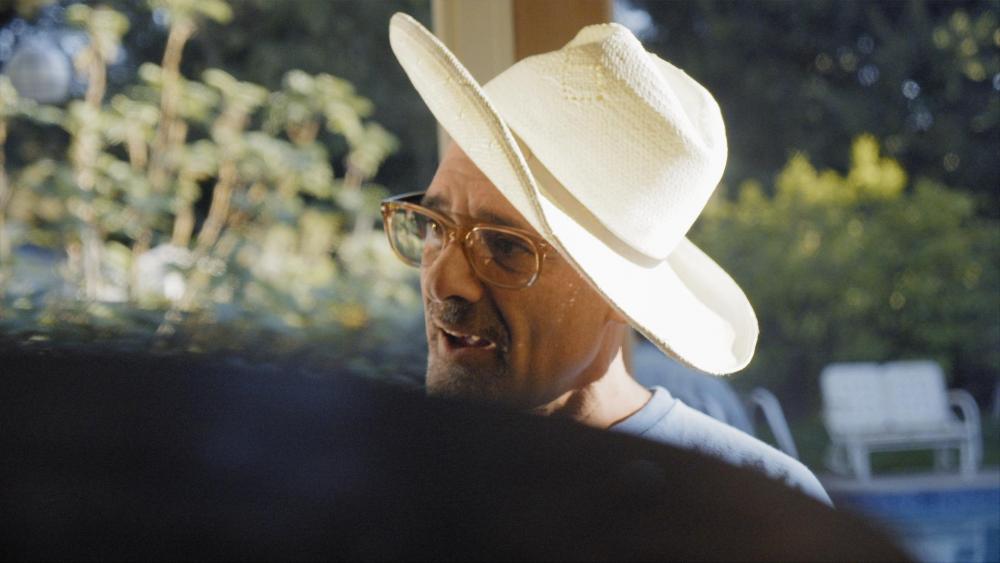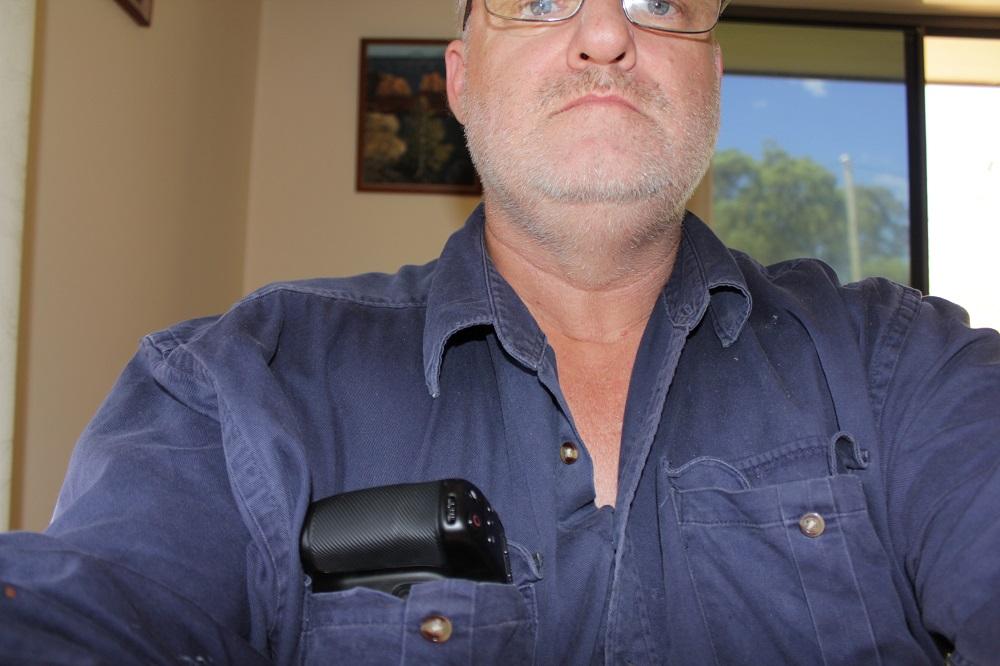-
Posts
7,873 -
Joined
-
Last visited
Content Type
Profiles
Forums
Articles
Posts posted by kye
-
-
33 minutes ago, thebrothersthre3 said:
Yeah I'll try that, a lot of colors look grey to my poorly calibrated eyes.
A trick in grading you can do to 'see better' is to add a contrast/saturation effect at the very end to both shots.
I'd suggest:
- Start with normal settings and get the right colour space transformation
- Sat=0 and just match the overall contrast and gamma curve
- Sat=0 with added contrast to fine-tune the gamma adjustments
- Sat=150-200% with normal contrast to exaggerate the colours and match the WB, saturation of various hues, and any tints to shadows / highlights
- back to normal sat and contrast and play the "what looks different' game
In a sense, a lot of grading to match things is just looking for what looks wrong and then fixing it and keeping on doing it until it's good enough. The other part of grading is looking for what might make the image better (whatever that means for the project) and just trying things and when you find something that improves it then just dial in the strength of it and then look for the next thing.
-
57 minutes ago, mercer said:
Couldn’t agree more. I think I’ve mentioned this before, probably multiple times, but I am the type of shooter that could film an entire movie with a single lens. But then I always worry I should have at least a second longer lens option. Which is another reason why I like fast 50mm lenses for that middle ground.
You raise a great point about having different sets, especially if I stick with my gut reaction of having a modern and vintage lens set. I guess as of now, my modern set is my Canon lenses and my vintage is my Zeiss QBM. It’s those damn Zeiss ZF Classics are throwing a wrench into my plans.
Another option that was kinda my original plan when I bought my 5D3 was to build a set around one fast prime and then get a zoom to cover the rest of the focal lengths. For instance, I had the Canon 24-70mm f/4 and the 35mm f/2 as my fast prime. Due to some unforeseen life circumstances I had to abandon that idea. But maybe that’s worth revisiting.
Anyway, the moral of the story is that I blame you because all of your lens tests got me thinking.
So, thanks!
You're welcome!!
Of course, nothing in my lens tests is stopping you from just putting a 50mm on the camera and then leaving the house...
 28 minutes ago, JordanWright said:
28 minutes ago, JordanWright said:Thats what I do with the 28-70 2.6 and the helios 58mm on a speed booster XL, although I do find myself wanting something wider sometimes
Wider than the 28? or similar to but wider than the Helios?
If you're talking the helios, then here: http://www.reduser.net/forum/showthread.php?152436-Russian-Soviet-USSR-Lens-Survival-Guide
You're welcome too!!
ah, pigeons located, cats thrown.. my work is done!
-
5 minutes ago, zerocool22 said:
Well yeah I often use flashes so the pocket 4K cant be taken serious for photo work.
And that!

-
Awesome - 3D stuff is moving along nicely

In terms of the fisheye stuff, when you're viewing a 3D image with VR goggles you're cropped into the image significantly, plus the fisheye is eliminated in software.
This is a screen grab from a mobile VR test app I wrote:
When you have the goggles on that line is straight...
-
6 hours ago, Zach Goodwin2 said:
Okay it is spring break and I am trying to find short film ideas. I can't come up with one with the sock puppets specifically with just me and my friend.
Roll two dice and then open a dictionary to a random page, go to the line number matching the first dice, and the word number on that line of the second dice. Do that a dozen times and write them all down. Pick the stupidest / worst / most bizarre three and make a script inspired by or including those words.
You can choose to apply a three-act structure or conflict or drama or tension or whatever the hell you want, but the vast majority of "cucumber buzzsaw hysteria" or "spontaneous curry nightingale" films will be fun to make and fun to watch..

- Zach Goodwin2 and IronFilm
-
 2
2
-
15 hours ago, Emanuel said:
I know P4K is not a hybrid but I am puzzled how you all rule out the Queen outside of such task. Test one for a few days you won't want to look back. Ah BTW grabs from 4K 60p give lovely stills : ) 'cause video, guys, this device is one or two generations ahead, if not more : -)
I was tempted to list it, but it depends on what type of stills you shoot. For example I doubt it can match the range of shutter speeds as a stills camera. But you're right that raw frame grabs are nicer than the majority of stills cameras still on sale today.
-
7 hours ago, thebrothersthre3 said:
No idea what I am doing really ?
If you want to learn a thing or two, take the original images and then match everyones grades as close as you possibly can. If you can't work out what someone did, ask them and then try that. You will learn a bunch about what the knobs all do, but you'll also learn more about what you like and what 'works' according to your eye and preferences.
-
10 hours ago, leslie said:
thanks that was rather informative. i didn't know that the dof changed as well. maybe i half knew but didn't really connect the dots before now. buying a bmp4k with a different mount is certainly proving to be a learning experience ?
Yeah, and it gives you a few interesting little tweaks. For example, the 12-35mm f2.8 "professional" lens is equivalent to a 24-70 f5.6 on FF, which no-one would say was "professional", they'd say that f4 was borderline and f5.6 is WTF, but tonnes of people are running around saying "it's a 2.8 professional zoom" and the manufacturers sure aren't keen to point out it's not the same as a canon 24-70 2.8 zoom. In fact, it's not even as fast as the canon FF kit lens - EF 24-105mm f/3.5-5.6.
Think about a smartphone - those lenses are often under f2, and yet there's no shallow-DOF to be found anywhere, which is why they're putting 1000 cameras on the back and blurring the photos in software.
People often comment that my Voigtlander 17.5mm F0.95 is completely ridiculous, but they don't bat an eyelid when someone says they're looking for a 35mm F1.4 for FF, yet my Voigt is equivalent to a 35mm f1.9.
Welcome to the crop factor party

-
11 hours ago, mercer said:
@kye I’ve done/been doing something similar by listing every lens I own and narrowing down my favorites. I then narrowed down the ones I definitely know I want to keep. Now I am in the testing phase by seeing which lenses are just undeniably better than their counterparts. From their I will take my slate of short films I have planned for the next year and decide which lens/lenses/lens sets will fit the tone/theme/story of each short. From their I hope to narrow down my collection from 15-20 to 5-10... it will be closer to 10... let’s be honest here.
10 is good. Probably what matters more than how many lenses are in your cupboard is how many lenses you're lugging around when on set. The less decisions on set the better, and the less time spent swapping between 40mm, 50mm, and 58mm lenses completely unnecessarily. And having 10 lenses that are very different is fine too - when I go to film my kids sports game I don't wonder if I should take the 8mm lens, I just take the sports ones and maybe a standard. Even if you had overlapping modern and vintage lenses the choice for a project wouldn't involve in you taking both sets.
-
If you want better low light than the GH5 then there aren't a lot of cameras to choose from. The GH5S and A7SII are two that come to mind, but you will sacrifice features if you swap to them.
It depends on what features you're willing to lose. Work out what feature you're willing to lose to get better low light performance and that might help you decide.
Sorry to hear your GH5 got stolen

-
All lenses are comparable in focal length, but because different sensors are different sizes then the FOV you get will differ with a given focal length.
This might help: https://mmcalc.com
-
-
52 minutes ago, Anaconda_ said:
You might also get away with the Meike 28mm f.28 - it's a great cheap, tiny manual prime with clickless aperture. Nice focal length for a walk around lens too.
If we're allowing lenses with more than zero thickness then the Panasonic 14/2.5 isn't too bad a choice either.
-
27 minutes ago, Mattias Burling said:
The intended customer of this camera doesn't even know what those numbers mean. They probably couldn't care less.
True, although not having 'slow-motion' is something a lot of people understand. Although you're right that there is a more domestic (less action) market that wouldn't need it.
-
-
5 hours ago, leslie said:
If you had the Olympus 9mm f8 or 15mm f8 'body cap' lenses then it would be the same size and would have a lens on it!
I know I'm kind of reaching for the extremes here, but for some specific types of stills photography those lenses are actually ideal as well as being very convenient and cheap too

-
4 hours ago, Mattias Burling said:
When listening to the guy and watching the adds I see nothing that points to it trying to be an action camera in the sense that you guys mean.
OK, good point.. that makes sense. Action cameras are really a poor fit for home photography for most people so this is more an alternative to the tough/rugged point-n-shoots. In that case there's a gap in the lower end of the market for a smartphone camera in a rugged and waterproof case that's not several hundred dollars.
Of course, if Canon are competing with smartphones, going from 4K60 and 1080p240 to 1080p30 sure is a come-down!!
-
@mercer I agree that having some extra low-light can make a difference. My Voigt 17.5mm is pretty rubbish at 0.95 (equivalent to 35mm F1.9) but I use it there a lot in low-light despite the softness and colour shifts.
I really like the idea of having a 'hero' lens and then only having other lenses when that lens doesn't do it. At normal shooting distances you can often hit those 'middle' focal lengths by just taking a step or two forward or back, so I've spaced my set at 8mm, 17.5mm and 40mm - (16mm / 35mm / 80mm equivalents). I view the 8mm and 40mm lenses as specialty lenses that I only put on when the situation doesn't fit the main lens, so in a sense I just have one lens and a couple of specialty lenses for frequent specialist situations.
I did an exercise a long time ago for my stills photography where I listed the different shooting scenarios I needed equipment for, then worked out what equipment was best for those situations. For example I discovered that if I'm shooting at night then I don't need a long lens, so although I do need a longer lens during the day, it doesn't have to be amazingly fast. Other things came out of that too, so I managed to save some money and equipment weight by thinking it through like that.
I know you're more interested in narrative, so you may have a wider range of situations or aesthetics, but by combining it with those aesthetics you might find some combinations aren't required. For example, someone might only shoot a doco with vintage lenses and that might not require a very wide angle lens, and projects that did might all call for the modern look and now you don't need a vintage wide angle. -
1 hour ago, newfoundmass said:
I'm surprised they even are releasing action cams anymore.
But people will buy stuff that has the name "Canon" on it. I doubt any of us will see one being used out in the wild, but I feel like these things are probably so cheap to produce that they still make Canon money and ultimately that's what they care about.
If you take a GoPro and extrapolate from there, these had better be closer to $20 than $99. It's like Leica or RED making an action camera!
-
17 hours ago, mercer said:
I’m going to keep the FD because it was so cheap and it blends in nicely with my 28mm and 85mm EF lenses. It actually fits the gap so nicely, I’m starting to question keeping the 35mm f/2.
I've noticed that having lenses at a 2x spacing seems to do the job for me, although I am cropping in post.
It seems like there are two series in this pattern - the 16, 28, 50, 100, and the 18, 35, 70 progressions, and those that start with a lens from one of these tend to stick within it more than not, unless you end up with every lens and have them closer together.
8 hours ago, mercer said:Regarding my 50mm tests: I’m looking for a fast lens that is undeniably sharp wide open. All of those samples were shot wide open, so it’s not the best of scenarios for the sharpest of images but for me it’s a balancing act of available light while fighting the glow of a wide open aperture.
My experience so far has suggested that looking for a lens that is sharp at a given aperture is more realistic. I've found there are two kind of lenses - those that get sharp when stopped down about two-stops and those that are sharp wide open. The sharp-wide-open group are typically the same as the first but are about two stops slower when wide-open. There are exceptions of course, but when choosing between a lens that is 1.4 and fully sharp at 2.8 vs a 2.8 lens that's sharp wide-open I just see the 1.4 as being more useful, and comparing lenses of different aperture values when wide-open is kind of missing the point.
The MFT lens comparison by Shane Hurlbutt with the Voigtlander vs Panasonic vs Olympus suffers from this problem. They compared the lenses at 2.8 and wide open, and that made it look like the F0.95 Voigtlander wasn't as good as the F1.7 Panasonic because the Voigt was softer at 0.95 than the Panny was at 1.7, but had he tested them at F1.7 the Voigt would have been almost at peak sharpness and would have slaughtered the Panny which was still two stops away from its sweet spot.
-
13 minutes ago, buggz said:
Thanks for this information.
A BM product manager says the OFX I use, Tiffen, which is now DFT, I still have both loaded, do not conform or meet the DR OFX spec fully?, and is the cause of major process time.
I will have to relate this back to Tiffen, as this was a huge expense for me, and I'd like to continue to use them, as they have really good tools.
Interesting. I'd definitely raise that with Tiffen. Let us know how you go

-
-
2 hours ago, OliKMIA said:
Wow, DUAL IR ISO toasting! I want one now. This sandwich looks so cinematic, and the motion cadence is epic, must be raw material for sure.
No no no no... RAW goes in, COOKED comes out!
- kaylee, OliKMIA and Mark Romero 2
-
 3
3
-








Insta 360 EVO 360/180 3D Camera
In: Cameras
Posted
Lok was impressed with the 3D-without-goggles feature: